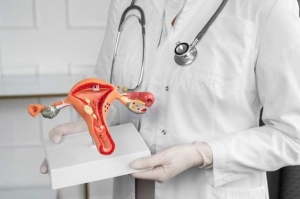The uterus consists of three layers: outer, middle and inner. The outer or serous layer covers the outside of the uterus. The middle layer or myometrium is the muscular wall of the uterus. It has the ability to expand during pregnancy, allowing the fetus to grow, and contract so that birth can occur. The inner layer or endometrium is the mucous epithelium lining the inside of the uterus.
What is the normal thickness of the endometrium?
In general, normal endometrial thickness is 6 mm for the lower limit and 20 mm for the upper limit. If the indicators go beyond the specified range, then pregnancy is very difficult. This is due to the fact that with a thin or atrophic endometrium, embryo implantation is practically impossible.
What are the causes of endometrial thinning?
Thin endometrium can occur for various reasons, for example, it can be an infectious process, often painless and asymptomatic, but it can be detected by endometrial biopsy and treated with antibiotics.
Another reason is insufficient tissue irrigation. If the endometrium does not receive enough blood flow, it may have difficulty thickening. In these cases, a protocol that improves blood circulation and increases vascularization may improve endometrial health.
The anatomical structure also plays an important role. If the uterus is small, then the thickness of the endometrium can be 6 or 7 mm, and in this case there are no problems with implantation. Iatrogenic causes: surgical intervention, too deep curettage of the uterus.
What does thin endometrium entail?
A thin endometrium can lead to irregular or abnormal cycles, with particularly painful periods and decreased flow. Sometimes, when the thickness of the endometrium is less than 6 mm, embryo implantation still occurs and pregnancy occurs, although the chances of success are low. If a woman with a thin endometrium decides to become pregnant, she needs to undergo thorough and regular medical examinations. It should be understood that thin endometrium increases the risk of miscarriage and complications.
What are the types of endometrial pathologies?
A common cause of infertility is endometriosis . Although the disease is primarily determined by endometrial tissue growing in the wrong places, it can also affect the uterine environment, the endometrium itself, and ovulation.
Endometrial or uterine polyps: These are usually benign, but not always. The presence of an endometrial polyp can cause infertility. Uterine fibroids are a benign tumor arising from the myometrium . Submucosal fibroids grow in the uterine cavity and affect the endometrium. Although submucosal fibroids are the least common, they cause increased bleeding and are at risk of developing into a malignant tumor.
Adenomyosis can cause painful menstrual cycles and is most common in women just before menopause, but can also occur in women in their 30s and 40s. Endometrial hypertrophy: thickening or excessive increase in thickness of the endometrium. Endometrial cancer, endometrial neoplasia, or adenocarcinoma : growth of malignant cells in endometrial tissue.
In addition to endometrial biopsy, ultrasound or hysteroscopy may be useful to diagnose infections affecting the endometrium . You can undergo the necessary diagnostic examinations and receive qualified consultation from a specialist at the Bogolyuby MC.
How to increase the thickness of the endometrium?
An innovative method of increasing endometrial thickness is the method of endometrial regeneration based on blood plasma, which is obtained from a patient’s blood sample.
Other methods include taking vitamin E and L-arginine (an amino acid), natural herbal supplements. There are also therapeutic methods based on the use of estrogen.



















